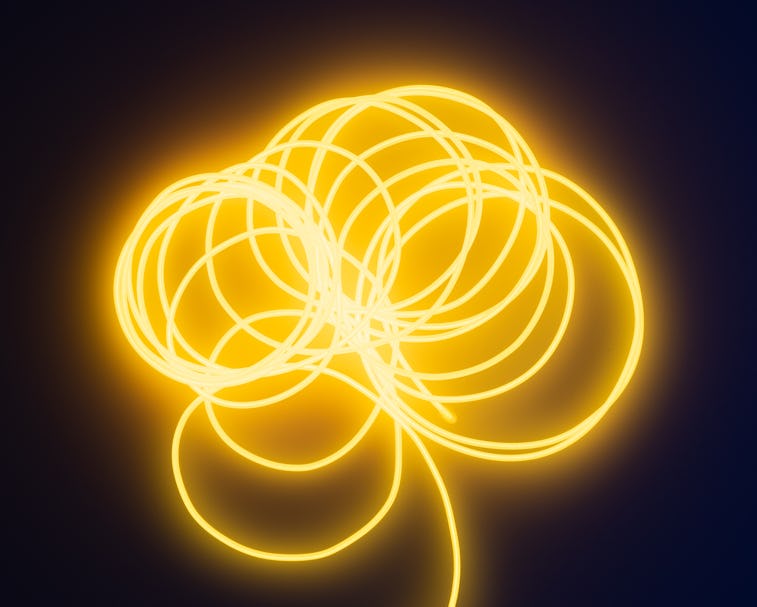Culture
Chemists have found a way to make the most fluorescent matter ever
Use cases have yet to emerge, but we expect the EDM community will think of something if no one else does.

Chemists at the Indiana University and the University of Copenhagen have solved a 150-year-old problem, much to the delight of materials scientists... and anyone who appreciates staring at gorgeous and glorious luminescent objects.
The team produced the brightest-ever fluorescent materials with the help of a nifty little macrocycle molecule that helps fluorescent lights retain their wonderful glow, according to a release posted to EurekAlert! It's the first time that fluorescent materials have been able to fully express the range of their colors and intensity. What changed? They got the space required to shine.
Q is for quenching — "Quenching" is the phenomenon that decreases the brightness in fluorescence. Experts call it a "depopulation of fluorescence," which is a serious-sounding way to say, "This fluorescent light is now boring and dull." When dyes are rendered to a solid state, they gather together in tight and compact units. It's a kind of dynamic coupling that decreases their wonderful glow, and it's long been a problem for dyes for years now.
One of the chemists involved in the endeavor, Amar Flood, explained the phenomenon in rather amusing terms using kids as a metaphor:
The problem of quenching and inter-dye coupling emerges when the dyes stand shoulder-to-shoulder inside solids. They cannot help but 'touch' each other. Like young children sitting at story time, they interfere with each other and stop behaving as individuals.
Just look at them — Even if you don't know much about fluorescence, or the chemical properties in both quenching and increasing glow, the lights are lovely to look at.
S is for SMILES — It's a slightly complicated process. The chemists worked on creating new material called small-molecule ionic isolation lattices or SMILES. This particular material packs a beautiful glow and through this process, the chemists were able to transfer it to a solid state without compromising its intensity.
According to Flood, "These materials have potential applications in any technology that needs bright fluorescence or calls for designing optical properties, including solar energy harvesting, bioimaging, and lasers." Plus, per Flood, other applications would include 3D-display technology and "light-switchable materials used for information storage and photochromic glass, and circularly polarized luminescence" among other developments. It's not just pretty; it's pretty useful, too.